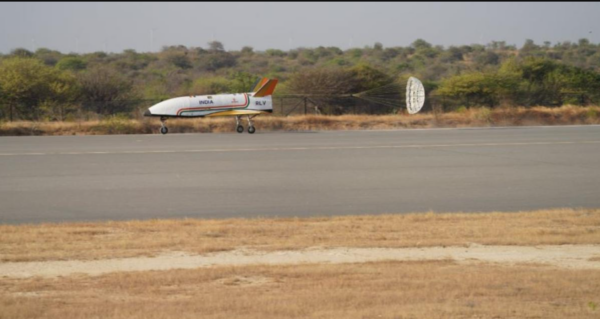The Indian Space Research Organization (ISRO) successfully demonstrated the landing of its Reusable Launch Vehicle on Sunday. This moves India one step closer to its ambition of developing its own spacecraft.
Early on April 2, the spacecraft lifted off from the Aeronautical Test Range (ATR) in Chitradurga, Karnataka while being towed by a Chinook helicopter. It was elevated to a height of 4.6 kilometers before being released in midair.
See the RLV landing from the air
At 7:40 a.m., RLV executed approach and landing maneuvers utilizing the Integrated navigation, guidance, and control system and landed autonomously on the ATR air strip.
ISRO’s Reusable Launch Vehicle landed Sunday.
ISRO stated, “The autonomous landing was conducted under the identical conditions of a Space Re-entry vehicle’s landing: high speed, unmanned, accurate landing from the same return trajectory.”
RLV is Isro’s effort to develop fundamental technologies for a completely reusable launch vehicle that enables inexpensive space travel. The Indian space agency has established itself as a cost-effective provider of launch services in the multibillion-dollar satellite launch industry, and the new system will bolster its position.
The RLV has an airplane-like design and combines the complexity of launch vehicles and planes.

